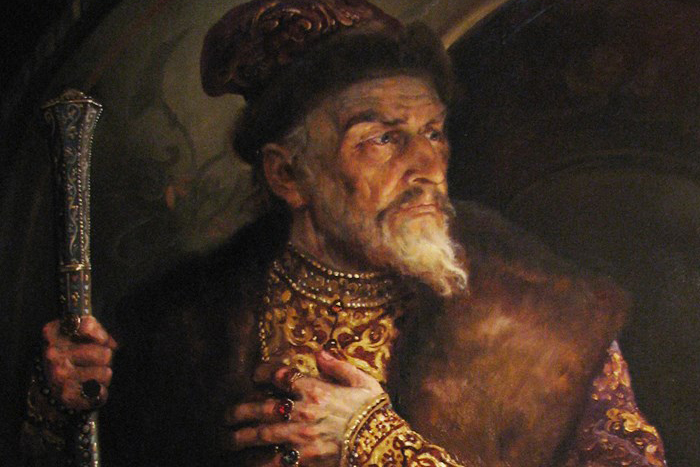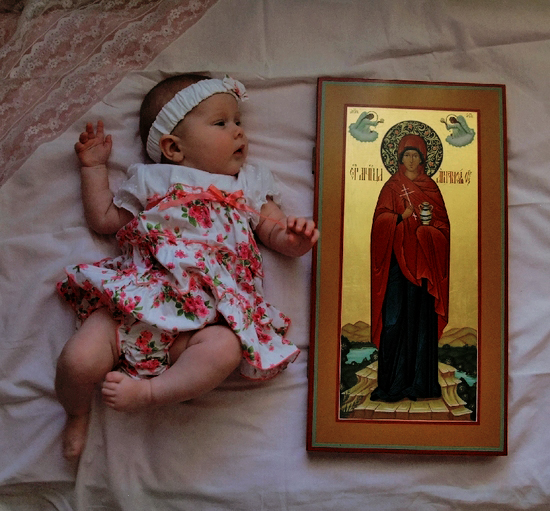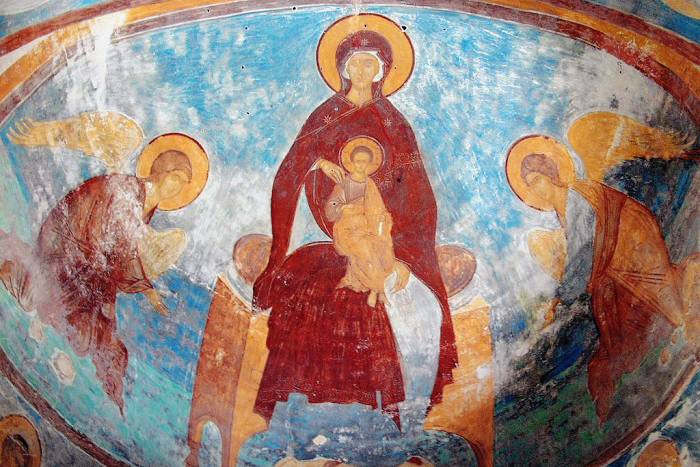
Search engines fetch a wide array of links to icon painting workshops specializing in measure icons, as well as links to articles popularizing these icons. Sometimes, however, the claims on their websites are preposterous. They promise that peace and tranquility will come to your house together with the measure icon, and that it will also help your child to grow into a moral and harmonious person, as if it were not an icon but some kind of an amulet.
What is a measure icon? A measure icon, or “birth” icon, is an icon of a saint that is painted for a specific person, and its size is determined by the height and width of the newborn baby’s shoulders. That is, it differs from a simple namesake icon in that it is painted to the size of a particular child and the saint is always depicted on it in full height.
This tradition dates back to the reign of Ivan the Terrible (16th century). The earliest surviving measure icon is an icon of his son, Prince John, which shows St. John Climacus in full length. Historians note that there is no earlier mention of measure icons neither in the Byzantine nor in Russian tradition.

Measure icons were popular in the 16th-17th centuries, but only in royal circles. There were occasions when, after the death of the owner, his measure icon was placed in the burial vault of the temple where he was buried.
Scientists have no definitive opinion on the emergence of the tradition of measure icons. Perhaps it was due to the belief in a special connection between a person and the saint whose name he had, as well as the belief that the icon became a kind of amulet to protect the life of its owner, which was a remnant of the pagan worldview.
It is assumed that this is related to the attitude of the people of that time to measurements and measuring. It could have been a representation of the life path of a person, whose measurements were taken for an icon at birth, so as to paint the image of a saint in full height, and then again after his death to make a coffin.
One way or another, after the reforms of Peter the Great, the popularity of measure icons dropped: we know of a handful of cases when such icons were painted in noble families. This tradition was considered a vestige of the past.
There was an upsurge of popularity of measure icons at the end of the 19th century until 1917, but soon they were forgotten again. The Bolshevik Revolution and the radical change of the regime made icon painting absolutely discommended.
Nowadays, the tradition of measure icons is undergoing a revival. First of all, the person who decides to order a measure icon should understand what an icon is and grasp its meaning. After all, an icon is not a charm, not a magic object, which ensures one’s protection and peace of mind if placed in the house. An icon is a reflection of the divine reality. It is the truth about the saints who have entered the Kingdom of Heaven as a result of their heroism. Icons are meant to remind us of this truth.

Anyway, an icon is a good gift. Sometimes a measure icon is the first icon in one’s house. It serves as one’s first contact with the Church life. Maybe when a child sees a measure icon above his bed, he will be curious and ask some questions. As an adult, he will see his size at birth and, praying to the saint and recalling his memory, he will see the measure of what he can become.
Our icon painters can paint for you an icon of any Orthodox saint of any size in the canonical manner. You can order a measure icon in our catalogue.



